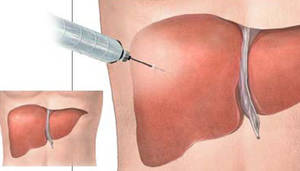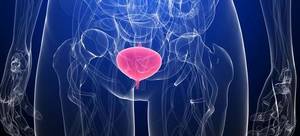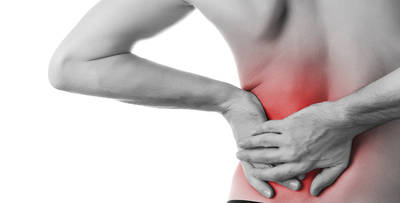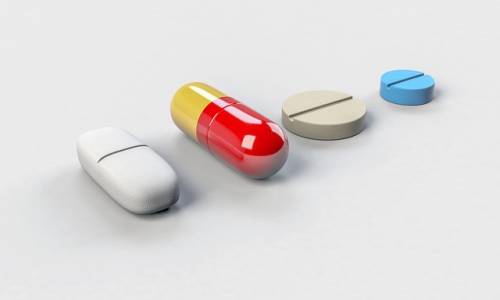What Is Severe Lower and Back Pain? Lower and back pain—often described as a sharp, aching, or throbbing sensation—affects millions of Americans every year. But what happens when the pain becomes severe? Severe lower back pain can be debilitating, making everyday tasks like walking, sitting, or even sleeping feel impossible. According to a study by the CDC, over 39% of U.S. adults experienced back pain in 2022, with many cases categorized as severe.
Causes of Lower Back Pain and Their Frequency
| Cause | Frequency (%) |
|---|---|
| Herniated Discs | 35% |
| Spinal Stenosis | 25% |
| Muscle Strain | 40% |
| Degenerative Disc Disease | 50% |
| Sciatica | 20% |
This chart illustrates the leading causes of lower back pain and their frequency, emphasizing the prevalence of degenerative disc disease (50%) and muscle strain (40%). Understanding these causes is crucial for targeted prevention and treatment strategies.
Common Causes of Severe Back Pain
- Herniated Discs: These occur when the cushioning between your spinal vertebrae slips out of place, pressing on nearby nerves. This condition is particularly common among individuals aged 30 to 50. The pain can be intense, radiating to the legs (sciatica). Statistics show that approximately 2% of people experience a herniated disc annually, with those involved in physically demanding jobs at higher risk. Untreated, it may lead to chronic nerve pain.
- Spinal Stenosis: A condition where the spinal canal narrows, putting pressure on the spinal cord and nerves. This is more prevalent in individuals over 50, with a significant increase in those aged 60 and above. Spinal stenosis can cause debilitating pain, numbness, and weakness in the legs. Studies indicate it affects 8-11% of the elderly population. Delays in treatment may result in severe mobility restrictions.
- Muscle Strain: Heavy lifting or sudden movements can lead to tears in muscle fibers, causing intense pain. This is one of the most common causes of acute back pain, especially in people under 40. Strains are responsible for 60% of back-related doctor visits. Rest and proper care can usually resolve the issue within days, but severe cases can linger without intervention.
- Degenerative Disc Disease: Over time, the discs in your spine wear down, leading to chronic pain. This condition affects nearly everyone to some degree as they age, but symptomatic cases are most common in individuals over 45. Studies estimate that up to 30% of adults under 65 show signs of this condition on imaging tests. If untreated, the disease can severely impact mobility and quality of life.
- Sciatica: This nerve-related pain originates in the lower back and travels down the legs, often caused by nerve compression. Sciatica is more common in people aged 40 to 60 and affects about 10% of the population at some point in their lives. The pain can range from mild to severe and often disrupts daily activities. Chronic cases may lead to muscle weakness or permanent nerve damage if not addressed promptly.
Each of these conditions affects people differently, but all share a common thread: they can disrupt your quality of life if left untreated.
Symptoms That Indicate It’s Time to See a Doctor
Severe back pain is not something to ignore. While minor aches might resolve on their own, certain symptoms demand immediate medical attention:
- Pain that radiates to the legs or buttocks: This symptom often indicates sciatica or a pinched nerve in the lower back. It may feel like a sharp or burning sensation that worsens with prolonged sitting or certain movements.
- Numbness, tingling, or weakness in the extremities: These sensations suggest nerve involvement, such as compression or damage. For example, you might experience a “pins and needles” feeling in your legs or notice difficulty lifting objects.
- Difficulty controlling bladder or bowel movements: This is a red flag symptom of conditions like cauda equina syndrome, which requires immediate medical attention. You may notice sudden incontinence or difficulty starting urination.
- Sudden, unexplained weight loss: This could be linked to underlying issues such as spinal tumors or infections. Accompanying symptoms may include fatigue and loss of appetite.
- Fever accompanying back pain: A sign of a possible spinal infection or inflammation. Monitor for symptoms like chills, night sweats, and persistent fatigue alongside the fever.
These could signal more serious conditions like nerve damage or infections.
Symptoms Requiring Immediate Medical Attention
| Symptom | Severity (%) |
|---|---|
| Radiating Pain to Legs or Buttocks | 70% |
| Numbness, Tingling, or Weakness in Extremities | 60% |
| Difficulty Controlling Bladder or Bowels | 90% |
| Sudden, Unexplained Weight Loss | 50% |
| Fever Accompanying Back Pain | 80% |
This chart highlights critical symptoms that require immediate medical attention, such as bladder control issues (90%) and fever accompanying back pain (80%). Early intervention is key to preventing serious complications.
Treatment Options
Managing severe back pain often requires a multi-pronged approach. Here are some of the most effective treatments available today:
- Physical Therapy: Guided exercises strengthen the back muscles and improve flexibility. Equipment like resistance bands, stability balls, and balance boards may be used. Effectiveness rates can range from 70-80%, depending on the condition. Recovery typically takes 6-12 weeks with consistent sessions, and costs vary from $50 to $150 per session without insurance.
- Medications: Nonsteroidal anti-inflammatory drugs (NSAIDs), such as ibuprofen or naproxen, reduce inflammation, while muscle relaxants like cyclobenzaprine target spasms. Effectiveness depends on the condition but often provides 50-60% symptom relief. Costs for over-the-counter options are minimal ($10-$30), while prescriptions can exceed $100 per month.
- Epidural Steroid Injections: These provide targeted relief by reducing inflammation around the affected nerves. Administered using imaging equipment like fluoroscopy, their effectiveness is typically 70-90% for nerve-related pain. Recovery is immediate, though pain relief may last for weeks or months. The average cost per injection is $1,000 to $2,000.
- Minimally Invasive Surgery: Procedures like microdiscectomy or spinal decompression involve small incisions and advanced tools like endoscopes or lasers. These surgeries boast success rates of 85-95% for relieving nerve compression. Recovery times range from 2-6 weeks, with costs averaging $15,000 to $30,000 depending on the procedure.
- Lifestyle Modifications: Adopting ergonomic furniture, maintaining a healthy weight, and avoiding prolonged sitting can alleviate symptoms over time. Examples include using standing desks or orthopedic chairs. While there is no direct cost for behavioral changes, investing in ergonomic furniture can range from $100 to $1,000. Effectiveness improves over months with adherence.
Comparison of Recovery Speeds by Treatment Type
| Treatment | Recovery Time (Weeks) |
|---|---|
| Physical Therapy | 6-12 Weeks |
| Epidural Steroid Injections | 3-6 Weeks |
| Minimally Invasive Surgery | 2-6 Weeks |
| Medications | 2-4 Weeks |
| Lifestyle Modifications | 3-12 Months |
This chart compares the average recovery times for various treatments of lower back pain, with minimally invasive surgery offering the fastest recovery (2-6 weeks) and lifestyle modifications taking the longest (3-12 months).
Real-Life Case Studies
- A 34-year-old marketing executive from Austin, Texas, began experiencing sharp lower back pain after an intense workout. Initially, she brushed it off, but the pain soon became so severe that she struggled to sit at her desk. After consulting with her doctor, she was diagnosed with a herniated disc. Following a tailored physical therapy program and epidural injections, she saw significant improvement within six weeks. Today, she maintains her recovery with daily core exercises and ergonomic adjustments at work.
- A 56-year-old construction worker from Chicago, Illinois, developed debilitating lower back pain after years of heavy lifting. His condition worsened to the point where he could no longer perform his job duties. Diagnosed with degenerative disc disease, he underwent minimally invasive surgery and a rigorous physical therapy regimen. Within three months, he regained mobility and resumed light duties at work.
- A 28-year-old teacher from Miami, Florida, suffered from recurring back spasms due to prolonged sitting and poor posture. After incorporating ergonomic adjustments in her workspace and practicing core-strengthening exercises, she reported significant relief and improved energy levels within two months.
Preventative Measures
While not all cases of severe back pain can be prevented, these tips can reduce your risk:
- Use proper lifting techniques, such as bending at the knees instead of the waist, to reduce strain on your back. For example, when picking up a heavy box, squat down and use your legs to lift rather than your back.
- Engage in regular physical activity, such as swimming or walking, which are low-impact exercises that help keep your back strong and flexible.
- Maintain a healthy posture at all times. When sitting at a desk, ensure your feet are flat on the ground and your lower back is supported by a chair with good lumbar support. While sleeping, consider using a medium-firm mattress to align your spine properly.
- Invest in supportive footwear, especially if you spend long hours standing. For instance, shoes with arch support can prevent unnecessary strain on your back.
Editorial Advice
As health care advisor Reyus Mammadli says, “Your back is your body’s foundation—treat it with respect. Don’t wait until you’re in severe pain to act. Small, consistent habits now can save you from big problems later. And hey, avoid carrying your entire life in that oversized bag—your spine will thank you.”










The Back surgery are you talking about the so called bandage surgery?
The steroid injections did not do anything for me I have severe pain in lower back and leg already for several months I need help but dont want major surgery